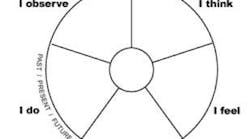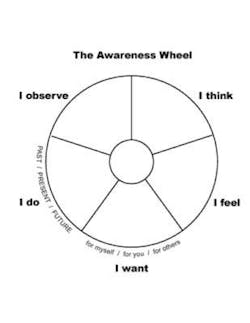RDH Event speaker answers more questions about equipment and procedures used in emergencies
Cindy Kleiman, RDH, BS
How many states require that the dental office have an automated external defibrillator (AED) present?
As of this writing, 12 states have laws that mandate the presence of an AED. However, each state has different variations of the rules. In some states, it is only needed for those doing IV sedation, and some require an AED in every dental office in the state. Some laws allow offices to share one as well. So, you need to become proactive and find out the rules and regulations for your state.
I hope it will be a requirement in all states within a couple of years. Remember, it is not enough to just have an AED in an office. Everyone must be regularly reminded that the AED is present so that someone remembers to grab it if needed. The entire team needs to know where it is stored and how to use it. Don’t depend on the dentist. That doctor may end up being the patient! And don’t wait until the emergency to read the instructions!
An AED battery can last anywhere from four to seven years. When the AED is purchased, the expected battery life should be noted. Some AEDs have a light that should be checked on a regular basis. Others have an audible tone that goes off when the battery is near its end.
What type of blood pressure cuff is best to use?
That is an interesting issue. There is no question that the manual cuff is the most accurate. However, if the dental hygienist or dentist is not using it on a regular basis, it should not be used for an emergency. The anxiety of the moment will just make it too difficult to use effectively. Automatic cuffs are becoming more accurate all the time. They will provide you with a reading even if you are very nervous.
The automatic wrist cuffs are not rated as highly as arm cuffs. However, if you live in a colder region and patients are wearing bulkier clothing that would require removal, I would consider using a wrist cuff due to the ease of use it provides and the higher likelihood it will be used. Consumer Reports rated the Omron automatics highest in accuracy. Amazon or Costco often carries them at the lowest price. An extra-large cuff is often needed for many patients. You cannot get an accurate reading if the cuff does not fit.
At what age should you begin taking blood pressure readings?
As far as I know, Texas is the only state that requires blood pressure to be taken on patients. Their law states that all patients over the age of 12 should have their blood pressure taken and charted. Neither Dr. Malamed nor Dr. Grimes states what age it should be taken in the dental office. Figure 1 is the national guidelines for evaluating BP readings.
What is the correct asthma inhaler drug?
Albuterol is the generic name for the standard asthma medication. You may see it listed with numerous brand names: ProAir, Proventil or Ventolin, for example.
I’m confused about where the ‘icing” should be placed in an unconscious diabetic patient.
To begin with, if you have an unconscious diabetic patient, you need to call 911 immediately. According to the latest edition of Dr. Stanley Malamed’s book, he recommends the transmucosal application of icing or sugar only when medical assistance will be delayed more than 40 minutes. The EMTs can provide IV or IM glucagon fast and it will work more quickly than the absorption of the “icing.”
However, some of you do live in locations where it takes more than 40 minutes for help to arrive. In this case, placing the glucose “icing” canine to canine in the mucolabial fold is appropriate. Commercially available medical emergency kits do not contain IV or injectable glucagon.
I work in a nursing home setting. What type of medical emergency kit is needed?
I have also provided care in a nursing home for years. I work without a dentist in the building. Therefore, I am responsible for knowing how to use all items in the emergency kit. When I was providing “homebound” care for eight years, I always traveled with a medical emergency kit and oxygen. Working in an alternative setting only increases the odds of your needing to be the leader in treatment of an emergency. No professional is as prevention-oriented as the dental hygienist. We must be prepared with knowledge and be ready in case the unexpected happens.
Some medical emergency kits have nitro tablets in them and some have a spray. Which is better to use and why?
One is not better than the other, but it is important that the usage and shelf life of both be understood. The pills have fewer doses in a bottle than the spray, but rarely will any office run out of the medication. The tablets also cost substantially less than the spray, which does have a longer shelf life, is more stable, and has more doses. The tablets are administered under the tongue and the spray can be used either over or under the tongue. No more than three doses of either form of the medication should be provided within 15 minutes.
Should one person in the office take responsibility for the emergency kit? And which person should it typically be?
Every person in the office should be knowledgeable in the use of all equipment in the kit and should be able to turn on the oxygen and use the AED.
Often in presentations, I ask the question, “Who is the leader in an emergency?”
More likely than not, the answer is the dentist. My response is “The doctor is the patient! Now, who is the leader?”
It is the team’s responsibility to be prepared. Have a different member of the team responsible for checking all the equipment each month. Thus, everyone is prepared. If you work in a very large practice, have two members work together each month. No matter how you work out the system, the goal is the same: All must be prepared!
If you have an emergency and unfortunately the necessary drug is expired, should you still give it rather than give nothing?
Yes, if a drug is indicated for the emergency, give the medication even if it has expired. In general, expired drugs only have the risk of lowered potency, not increased danger to the patient. However, if the kit is checked each month, this should never occur.
What is the approximate cost for a basic kit?
I list below the names of the three most common medical kits that I am familiar with. Often there are choices in the type of EpiPen and the type of nitroglycerin. Contact all three for prices and choices. You can also purchase the injectable drugs from a pharmacy and make your own kit.
- Acute Care Pharmaceuticals DDK 100; (888) 909-7700; www.acutecareonline.com
- Health First SM10; (800) 331-1984; www.healthfirst.com
- Savalife M100; (800) 933-5885; www.savalife.com
What is the minimum needed in a kit if you are a mobile hygienist?
Exactly the same as you would have in the office.
Cindy Kleiman, RDH, BS is an international speaker on care of the medically complex patient and medical emergencies for the dental professional. She can be reached at (480) 342-9655 or [email protected].
References
Grimes EB. Medical Emergencies: Essentials for the Dental Professional. Upper Saddle River, NJ:Pearson Education Inc, 2009.
Malamed SF. Medical Emergencies in the Dental Office, Sixth Edition. St. Louis, MO: Mosby Inc, 2007.
Past RDH Issues






